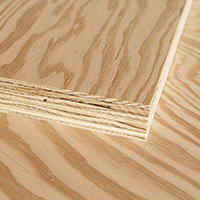Plywood
Plywood – the original engineered wood product
Plywood is used for a wide range of structural, interior and exterior applications – from house construction and internal panelling through to concrete formwork. Benefits include superior dimensional stability and an excellent strength-to-weight ratio as well as its ability to resist cracking, shrinkage, splitting, and twisting or warping.
Manufactured from thin sheets of cross-laminated veneer and bonded under heat and pressure with strong adhesives, modern plywood has become one of the most widely used building products since it was first introduced in 1850.
APA member mills manufacture plywood in a wide variety of appearance grades from smooth, natural surfaces suitable for finish work and underlayment to more economical grades for wall sheathing and subfloors. Non-overlaid plywood panels come in three levels of surface finish – sanded, touch-sanded and unsanded.
When a plywood panel is performance-rated, it indicates it has been manufactured in line with US official standards. These provide product performance benchmarks, such as load-carrying capacity for designated end uses. US rated panels sold in both the UK and EU countries display an official CE or UKCA mark to show they have also been manufactured to comply with the relevant performance-based standards, see:

Specification Tool – how to use
The plywood specification tool provides the core technical information you need to help make the right choice for your application. Just select whether this is walls, roofs, flooring, concrete formwork – or even a non-structural application – and run the tool. It will quickly tell you which grades are most suitable. Access here.
As well as the grade, it tells you the range of thicknesses and span ratings, the panel’s specific finish, veneer strengths and even the wood species used. You can also find out if the panel is suitable for exterior use, its moisture resistance and bond durability.
With more than a dozen common thicknesses and over 20 different grades, it’s easy to specify the right panel for the job.
If you need more help, try APA’s Global Help Desk. It’s a free service for anyone who needs technical advice on the specification and application of US engineered wood products and systems. Email help@apawood.org or call +1 253 620 7400.
Panel application info
A trademarked panel carries information on its potential use in one of two ways:
- Simply by telling you what it is suitable for eg Rated Sturd-I-Floor, Rated Sheathing or Underlayment, or
- Showing the veneer grade on the face and back of the panel e.g. A-C or B-B.
Know your span rating
Span Rating on a US trademarked panel provides vital information about its structural viability. It denotes the maximum recommended centre to centre spacing of supports over which the panel should be placed, with its strength axis across two or more supports. The further the supports are spaced, the thicker the panel needs to be.
Span ratings and panel thickness need to be considered together when deciding if a specific panel is suitable for your application. The plywood Specification Tool provides all the info you would need. Use it here.
Thickness tolerances
Different plywood grades have different thickness tolerances. Our plywood Specification Tool helps you select the right product by giving you the nominal thickness for each grade.
US trademarked panels carry the term ‘Performance Category’ as a way of identifying the panel’s nominal thickness. The APA tool provides both the nominal thickness of each panel in mm (converted from US inches) followed by the US Performance Category (given in brackets). The tool gives the midpoint measurement but you can find the complete tolerance ranges in the It takes the info in the APA Construction Guide.
What is ‘Sized for Spacing’
Like all wood products, plywood will expand or shrink slightly with changes in moisture content. If the panels are tightly butted, there is no room for this, and buckling can occur.
APA therefore recommends a 3mm (1/8-inch) space is left between panel edge and the end joints.
Sometimes this extra spacing has already been taken into account by the US manufacturer. If it has, you will see the words ‘Sized for Spacing’ on the panel. You will then know that the panel will be slightly less than the specified length or width.
Tongue & groove feature
US trademarked plywood panels have a tongue and groove (T&G) profile on their two long edges. This removes the need for support (blocking) under adjacent panel edges to prevent them from deflecting independently of each other under a load. The material removed to create the tongue normally reduces the width of the panel by 12.5 mm (1/2″), so that the net width of tongue and groove panels is typically 1206mm (47-½”).
Wood species for plywood
Knowing the species of wood used to manufacture the plywood panel’s face and back are important as they determine its bending strength and stiffness: group 1 is the strongest and group 5 the weakest. For APA trademarked panels, the main species are:
- Douglas-fir(Groups 1 & 2) for faces and back; with other species used only for inner plies – Western Larch, Western Hemlock, the true firs (Balsam, California Red, Grand, Noble, Pacific Silver and White), Ponderosa and Lodgeole Pine.
- Southern Yellow Pine(Loblolly, Longleaf, Shortleaf, Slash) with some minor use of Sweetgum and Yellow Poplar for inner plies.
Concrete formwork
Plyform is a special type of plywood panel with sufficient strength to support the weight of the wet concrete. It is stronger than conventional plywood, with an exterior bond classification. Our specification tool will help you select the right grade for your formwork. Check here.
The Washington State History Museum in Tacoma, USA, is a visually powerful example of the bending strength of APA Plyform. Curved forms were integral to achieving the architectural design, and used to form 11 concrete arches, each 55ft. high. The tighter the radius of curvature, the thinner the plywood needs to be to bend to the required shape.
APA offers three Plyform types, all using only the strongest wood species for the face and back veneers. They have an exterior bond classification and come in three strength classes: Structural 1, which is made from the strongest wood (species group 1); Class I or Class II. The lower the grade of veneer, the greater the size and number of defects which reduce strength and stiffness.
APA’s specific panels for concrete forming:
- B-B and B-C Plyform: all three strength classes
- HDO Plyform: all three classes
- MDO Plyform: Class I or Class II
An overlay on a panel means the wood veneer is not in direct contact with the concrete. All plyform grades are available with a High Density Overlay (HDO) or a Medium Density Overlay (MDO) on one or both faces. HDO plyform gives a near polished concrete surface and normally produces 20 to 50 pours or more.
APA’s Concrete Forming Design/Construction Guide is designed for architects, engineers and contractors. Download here.
